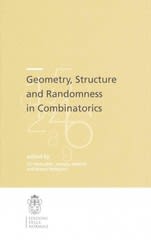Question
In Study 2, Bryant and colleagues (2005) recruited a sample of 65 college students. Participants were randomly assigned to one of three conditions: Cognitive imagery
| In Study 2, Bryant and colleagues (2005) recruited a sample of 65 college students. Participants were randomly assigned to one of three conditions:
Participants were in each group were instructed to use these strategies over one week. After the week was over, they reported their happiness levels. Results of the study indicated that there wasNOsignificant omnibus difference in happiness level,F(2, 60) = 2.39,p >0.05. |
| Question 11 of 391 Points Did the researchers use the correct test?
Yes
No Reset Selection | |
| Question 12 of 393 Points Justify your answer, above
ANOVA can be used when you have with three or more levels of an independent variable
You can use ANOVA with three levels, but at-test would be easier and give you the same results
ANOVA's primary strength is its ability to examine for differences in two groups
Regression analysis would be preferable because the independent variable is continuous Reset Selection | |
| Question 13 of 393 Points How would you interpret the results of this oneway ANOVA?
There is likely a difference in happiness in the "population"
Those who spend time reminiscing are significantly more likely to be happy than those who don't
There are mean differences but we do not know which conditions differ
There are no mean differences in happiness across the three conditions Reset Selection | |
| Question 14 of 392 Points When we run a oneway analysis of variance, we are partitioning the ______________ into two meaningful parts.
Within groups variance
Interaction variance
Between groupsvariance
Total variance Reset Selection | |
| Question 15 of 392 Points Broadly speaking, what is the Fratio used in ANOVA?
A ratio of variances that tells if differences between groups are larger than differences within groups
A ratio of variances that tells you which individual group(s) is/are different from the other(s)
A ratio of sums of squares that tells us which specific group(s) is/are different from the other(s)
A ratio of sums of squares that tells if differences between groups are larger than differences within groups Reset Selection | |
| Question 16 of 392 Points Should post hoc tests be conducted after this analysis?
No - without a significant omnibusF, there is no need to conduct post hoc tests
Yes - without post hoc tests, Bryant and colleagues (2005) would not know which means differed
No - with only two groups, looking at the descriptive statistics will give all the relevant information
Yes - post hoc tests are always used when conducting a oneway ANOVA Reset Selection |
Step by Step Solution
There are 3 Steps involved in it
Step: 1

Get Instant Access to Expert-Tailored Solutions
See step-by-step solutions with expert insights and AI powered tools for academic success
Step: 2

Step: 3

Ace Your Homework with AI
Get the answers you need in no time with our AI-driven, step-by-step assistance
Get Started


